
PM-3900B
Miter Saw
Stand +
Pedestal
Roller
Date Purchased/Date d’achat /Fecha de compra:
Where Purchased/Lieu d’achat /Dónde se compró:
Address/Adresse /Dirección:
OPERATORS MANUAL
Assembly • Operation • Parts List • Warnings • Warranty
Caution: Read all instructions carefully.
SAVE THESE INSTRUCTIONS. Refer to them often and use them to instruct others.
MANUEL DE L’UTILISATEUR
Assemblage • Fonctionnement • Liste de pièces • Avertissements • Garantie
Mise en garde : Lire attentivement l’ensemble des instructions.
CONSERVER CES INSTRUCTIONS. Les consulter souvent et les utiliser pour éduquer les autres.
MANUAL DEL OPERADOR
Ensamble • Operación • Lista de Partes • Advertencias • Garantía
Precaución: Lea cuidadosamente todas las instrucciones.
GUARDE ESTAS INSTRUCCIONES. Refiérase a las instrucciones y úselas para enseñarle a otras personas.

2
Congratulations
You have just purchased a PM-3900B Folding Miter Saw Stand & Pedestal Roller Combo. This product has been
specifically designed to assist you in the use of your 10-12" miter saw.
Parts
Description Part No. Qty
Top Frame 1
Leg with holes for axle brackets 3029 2
C Leg 2974 2
Outrigger Supports 3045 2
Support “T” 3046 2
Quick Attach Machine Mounts 3044 2
1/4" - 20 x 1-3/4" Hex Head Bolt D139 8
1/4" - 20 Lock Nut D102 8
I 1/4" - 20 Serrated Flange Nut D118 8
J 5/16" - 18 3-Point Knob G101 4
K 5/16" - 18 x 2-1/2" Mounting Bolt C227 4
L 5/16" - 18 Nut C202 4
M 5/16" Flat Washer C204 4
N 5/16" Lock Washer C226 4
O Leg Plugs 2908 4
P Latch Pin F206 2
Q 6" Wheels H213 2
R Axle Brackets 2897 2

3
Hardware & Parts
Note: Hardware and parts shown are actual size.
Tools required (not included): Adjustable wrench, 1/4" Socket, 5/16" socket
K
L
G
J
I
HN
R
M
General Safety Instructions for Power Tools
Using power tools of any kind can be dangerous if safe operating procedures are not followed. Recognizing the
hazards of each tool and using them with respect and caution will considerably limit the possibility of personal
injury. However, if safety precautions are ignored, personal injury will likely result. Always use common sense – your
personal safety-is your responsibility. Know your power tool. Read and understand the Operator’s Manual and
observe the warnings and instruction labels affixed to the tool.
Safety Instructions for Miter Saw Stands
1. Use caution when folding or unfolding legs to limit any finger pinch points.
2. Place stand on flat and level surface to keep tool from rocking or tipping.
3. Make certain that work support extensions are within safe operating limits, and are properly locked in place before
using tool. Do not exceed 300 lbs. on main frame table.
4. Test the setup for stability before proceeding with work.
5. Be sure the miter saw is tightened securely at all mountings before use.

Assembly Instructions
Read all assembly instructions completely before attempting assembly.
See parts list on Page 2 for names and pictures of parts. Identify all
components and hardware.
1. Install Leg
as shown in Figure 1 to Top Frame
and secure with
1/4" - 20 x 1-3/4" Bolt
and 1/4" Lock Nut
. Insure that Snap Pin is
facing out and securely latches in the open and closed positions.
Do not over tighten. Repeat on remaining three Legs.
Note: The two legs with the additional 4 holes need to be mounted on the
same end of the Top Frame.
2. Place top frame upside down on your workbench or work surface. Open
the legs by depressing the snap pins and pivot the legs into the open
position.
3. Install 1-1/4" Tube Plugs
O
into the bottom of all four legs, as shown in Figure
2. Return unit to upright position.
4. Install the Outrigger Supports
into the Top Tube as shown in Figure 3.
5. Install (4) 5/16" - 18 3-Point Knobs
J
into the threaded holes in the Top
Tubes and Outrigger Supports
.
6. Install Support T’s
into the ends of the Outrigger Supports
. Figure 4.
7. Locate the machine mounts (Part# 3042). Carefully review Figure 5. Note
the location of the spring mounted handles; these should be positioned
to the rear of the saw as shown. This allows for easier installation and
removal of the saw.
8. Attach the (2) machine mounts to the saw using 5/16"-18 x 2-1/2" carriage
bolts
K
at each saw mounting point. See Figure 6. From the bottom,
pass the carriage bolt through the slot in the machine mount, through the
mounting hole and secure with 5/16" flat washer
M
, lock washer
N
and nut
L
. Hand tighten only.
4
Figure 5
Figure 2: Legs Represented in Open Position
Figure 1
Figure 3
Figure 4
O
J
J

Assembly Instructions
9. Carefully lift the saw and place onto the miter saw stand. Be sure the hook
end of the machine mount locks under the top tube as shown in Figure
7. The spring loaded handle should lock under the opposite top tube as
shown in Figure 8.
10. Slide the saw forward or back along the machine mount to best balance
the saw on the stand. Secure the saw by tightening the carriage bolts
installed in Step 8.
Attach the Wheels
1. Attach the axle brackets
R
to the outside of the leg using (2) 1/4-20 x
1-3/4" Hex Bolts
and (2) 1/4-20 Nylon Lock Nuts
per leg. Align the
axle bracket holes with the holes in the leg so the axle will be parallel with
ground when secured. Figure 9.
2. Slide the 6" Wheel
Q
onto the axle. The integrated spacer on the wheel
should face the leg. Secure in place with Latch Pin
P
. Figure 10.
Set-up / Knockdown Procedure
1. Remove the saw from the work stand.
2. Collapse the Extension Supports to minimum size.
3. Depress the snap button on each leg and fold the leg under the Top until
the snap button pops into the closed position. Figure 11.
5
K
Figure 6
OPEN
LOCKED
Figure 8
Figure 7
Figure 11
Figure 9 Figure 10
K
L
N
M
R
Q
P

6
Descripción Parte No. Cantidad
Armazón Superior 1
Patas con orificios para los soportes de eje 3029 2
C Pata 2974 2
Soportes Salientes 3045 2
Soporte en “T” 3046 2
Montajes de Máquina de Rápida Fijación
3044 2
Perno Hexagonal de 1/4" - 20 x 1-3/4"
D139 8
Tuerca Nylok de 1/4"- 20 D102 8
I 1/4" - 20 Tuerca cara estriada D118 8
J
Perilla de 3 puntos de 5/16" - 18 x 1/2"
G101 4
K 5/16" - 18 x 2-1/2" Tornillo de montaje C227 4
L Tuerca Hexagonal de 5/16" C202 4
M Arandelas Planas de 5/16" C204 4
N Arandelas de Seguridad de 5/16" C226 4
O Tapones de pata 2908 4
P Pasador de Barra F206 2
Q Ruedas de 6" H213 2
R Soporte de Eje 2897 2
Felicitaciones
Usted acaba de comprar un Soporte Plegable de Sierra de Mitrar PM-3900. Este producto fue diseñado
específicamente para ayudarle al usar su sierra de mitrar de 10-12”.
Partes

7
Ferretería y Partes
Nota: La ferretería y las partes que se muestran son del tamaño real.
K
L
G
J
I
HN
R
M
Instrucciones Generales de
Seguridad para Herramientas Mecánicas
El uso de cualquier tipo de herramienta mecánica puede ser peligroso de no seguirse los procedimientos de
operación. El reconocer los peligros de cada herramienta y el usarlas con respeto y precaución, limitará de
forma considerable la posibilidad de lesiones personales. No obstante, el ignorar las precauciones de seguridad
probablemente resultará en lesiones personales. Use siempre buen sentido común – su seguridad personal es
su responsabilidad. Conozca la herramienta mecánica. Lea y comprenda el Manual del Operador y observe las
advertencias y etiquetas de instrucciones fijadas en la herramienta.
Instrucciones de Seguridad para
los Soportes de Sierra de Mitrar
1. Use cautela al doblar y desdoblar las patas a fin de evitar cualquier punto de pellizco de dedos.
2. Coloque el soporte en una superficie plana y nivelada de modo que la herramienta no se balancee ni se vuelque.
3. Cerciórese de que las extensiones de soporte de trabajo estén dentro de los límites de operación segura y que
estén correctamente trabadas en su lugar antes de usar la herramienta. No se debe exceder las 300 libras sobre
la mesa del armazón principal.
4. Compruebe la instalación por estabilidad antes de proceder con la tarea.
5. Asegúrese de que la sierra de mitrar esté bien fijada en todos los montajes antes de usar o doblar el soporte para
su transporte.

14
Instrucciones de Ensamble
Lea completamente todas las instrucciones de ensamble antes de intentar
ensamblar su PM-3900. Vea la lista de partes en la Página 12 para obtener
los nombres y las ilustraciones de las partes.
1. Instale la pata
en el armazón superior
, como se indica en la Figura 1,
y asegúrela con un tornillo
de 1/4” - 20 x 1-3/4” y una tuerca de cierre
de 1/4”. Asegúrese de que el perno a presión esté orientado hacia fuera
y que trabe firmemente en las posiciones abierta y cerrada. No apriete
demasiado. Repita el procedimiento con las tres patas restantes.
Nota: Las dos patas con 4 orificios adicionales deben estar montadas en el
mismo extremo del armazón superior.
2. Coloque la parte superior del armazón boca abajo sobre el banco de
trabajo o en la superficie de trabajo. Abra las patas presionando los
broches a presión y gírelas a la posición abierta.
3. Instale los tapones de tubo de 1-1/4”
O
en la parte inferior de las cuatro
patas, como se muestra en la Figura 2. Coloque la unidad en la posición
vertical.
4. Instale los soportes salientes
en el tubo superior como se muestra en la
Figura 3.
5. Instale las (4) perillas de 3-puntos de 5/16” - 18
J
en los orificios roscados
de los tubos superiores y en los soportes salientes
.
6. Instale los soportes en T’s
en los extremos de los soportes salientes
.
Figura 4.
7. Localice los montantes de la máquina (Parte # 3042). Cuidadosamente
revise la Figura 5. Observe la localización de las manijas montadas a
resorte: estas deberán estar posicionadas hacia la parte posterior de la
sierra tal como se muestra. Esto permitirá la fácil instalación y remoción
de la sierra.
8. Acople los dos (2) montantes de la máquina a la sierra, usando tornillos
de cuello cuadrado de 5/16"-18 x 2-1/2"
K
en cada punto de montaje.
Vea la Figura 6. Desde la parte inferior, pase el tornillo de cuello cuadrado
a través de la ranura del montante de la máquina, a través del orificio de
montaje y asegúrelo con una arandela plana de 5/16"
M
, arandela de
seguridad
N
y una tuerca
L
. Solamente apriételas a mano.
Figura 2:
Patas ilustradas en posición abierta
8
Figura 5
Figura 1
Figura 3
Figura 4
O
J
J

9
9. Cuidadosamente levante la sierra y colóquela en su lugar en el soporte.
Asegúrese de que el extremo del gancho del montaje de la máquina
quede trabado debajo del tubo superior como se muestra en la Figura 7.
La manija cargada a resorte deberá trabar por debajo del tubo superior
opuesto como se muestra en la Figura 8.
10. Deslice la sierra hacia delante o hacia atrás a lo largo del montaje de
la máquina para el mejor balance de la sierra en el soporte. Asegure la
sierra apretando los tornillos de cuello cuadrado instalados en el paso 8.
Instale las ruedas
1. Coloque los soportes de eje
R
en el exterior de la pata usando (2) tornillos
hexagonales de 1/4-20 x 1-3/4"
y (2) tuercas de cierre de Nylok 1/4-20
por pata. Alinee los orificios de soporte de eje con los orificios de pata
de manera que el eje al estar fijado quede paralelo al piso. Figura 9.
2. Deslice la rueda de 6"
Q
en el eje. El espaciador integrado de la rueda
debe estar orientado hacia la pata, asegúrela en el lugar con el perno de
fijación
P
. Figura 10.
Procedimiento Montaje /
Desmontaje
1. Retire la sierra del soporte de trabajo.
2. Pliegue los soportes de extensión a su menor tamaño.
3. Oprima el botón a presión de cada pata y pliegue la pata debajo de la
parte superior hasta que el botón de cierre enceste en la posición de
cerrado. Figura 11.
Figura 6
Figura 8
Figura 7
Figura 11
Figura 9 Figura 10
K
L
N
M
R
Q
P
ABIERTO
CERRADO

10
Description Réf n°. Quantité
Cadre supérieur 1
Patte avec trous pour fixer les supports d’essieu 3029 2
C Patte 2974 2
Supports en porte-à-faux 3045 2
Support en « T » 3046 2
Blocs de fixation à installation rapide 3044 2
Boulons hexagonaux de 1/4 po - 20 x 1-3/4 po D139 8
Écrou Nylok de 1/4 po - 20 D102 8
I Écrou à bride à face striée 1⁄4 po -20 D118 8
J Poignée à 3 points de 5/16 po G101 4
K Boulon de montage de 5/16 po - 18 x 2-1/2 po C227 4
L Écrou hexagonal de 5/16 po C202 4
M Rondelles plates de 5/16 po C204 4
N Rondelles de blocage de 5/16 po C226 4
O Pieds de patte 2908 4
P Goupille de verrouillage F206 2
Q Roue de 6 po H213 2
R Support d’essieu 2897 2
Félicitations
Vous venez d’acheter un chevalet de scie à onglets repliable PM-3900. Ce produit a été conçu spécifiquement pour
vous aider à utiliser votre scie à onglets 10 -12 po.
Pièces

11
Visserie et pièces
Remarque : La visserie et les pièces sont illustrées dans leur taille réelle.
K
L
G
J
I
HN
R
M
Instructions générales de sécurité
pour les outils électriques
L’utilisation d’outils électriques, de quelque type que ce soit, peut être dangereuse si les procédures d’utilisation de
l’outil ne sont pas respectées. Le fait de reconnaître et d’identifier les dangers de chaque outil et de les utiliser avec
respect et prudence réduira considérablement les risques d’accidents. Cependant, si les précautions de sécurité
sont ignorées il plus que probable qu’un accident survienne. Toujours faire preuve de bon sens – votre sécurité
personnelle est votre responsabilité. Connaître son outil électrique. Lire et comprendre le manuel de l’utilisateur et
respecter le contenu des étiquettes d’avertissement et des instructions présentes sur l’outil.
Instructions de sécurité
pour supports de scie à onglets
1. Plier et déplier les pieds avec précaution afin de limiter les points de pincement des doigts.
2. Placer le support sur une surface plane et de niveau pour que l’outil ne puisse pas se balancer ou basculer.
3. S’assurer que les extensions de support de la pièce sont dans des limites d’utilisation sécuritaires et qu’elles sont
verrouillées en place avant d’utiliser l’outil. Ne pas placer un poids supérieur à 136,1 kg (300 lb) sur la table du
cadre principal.
4. Vérifier la stabilité de l’installation avant de commencer à l’utiliser.
5. S’assurer que la scie à onglets et serrée de façon sécuritaire au niveau de tous les montages avant d’utiliser ou de
plier le support pour le transporter.

9
Instructions de montage
Lire complètement toutes les instructions d’assemblage avant de commencer
à assembler. Consulter la liste des pièces à la page 7 pour connaître le nom
et voir des illustrations des pièces. Certains composants peuvent être pré
assemblées usine.
1. Fixer la patte
au cadre supérieur
avec le boulon
de 1⁄4 po - 20 x 1
3⁄4 po et l’écrou de blocage
de 1⁄4 po, comme il est illustré à la figure 1.
S’assurer que la tige d’enclenchement fait face à l’extérieur et qu’elle est
enclenchée de façon sécuritaire en position ouverte et fermée. Ne pas trop
serrer. Répéter la procédure pour les trois autres pattes.
Remarque : Les deux pattes avec quatre (4) trous supplémentaires doivent
être montées à la même extrémité du cadre supérieur.
2. Placer le cadre supérieur à l’envers sur l’établi ou sur la surface de travail.
Ouvrir les pattes en appuyant sur les tiges d’enclenchement et faire
pivoter les pattes en position ouverte.
3. Installer les pieds de patte de 1 1⁄4 po
O
à la base des quatre pattes, comme
il est illustré à la figure 2. Remettre le chevalet en position relevé.
4. Installer les supports en porte-à-faux
dans le tube supérieur, comme il
est illustré à la figure 3.
5. Installer les (4) poignée à 3 pointes de 5/16 po - 18
J
dans les trous filetés
des tubes supérieurs et les supports en porte-à-faux
.
6. Installer les supports en T
dans les extrémités des supports en porte-à-
faux
. Figure 4.
7. Repérer les blocs de fixation (No de pièce 3042). Passer attentivement en
revue la figure 5. Prendre note de l’emplacement des poignées à ressort
qui doivent être placées à l’arrière de la scie, comme il est illustré. Ceci
permet de faciliter l’installation et la dépose de la scie.
8. Fixer les deux (2) blocs de fixation à la scie avec les boulons mécaniques
de 5/16 po - 18 x 2 1/2 po
K
à chaque point de fixation de la scie. Voir la
figure 6. À partir de la base, faire passer le boulon mécanique à travers la
fente du bloc de fixation, puis à travers le trou de montage et fixer avec
une rondelle plate de 5/16 po
M
, une rondelle de blocage
N
et un écrou
L
. Serrer à la main seulement.
Figure 2:
Pattes illustrées en position ouverte
12
Figure 5
Figure 1
Figure 3
Figure 4
O
J
J

13
9. Soulever la scie avec précaution et la placer sur le chevalet pour scie à
onglets. S’assurer que le crochet du bloc de fixation se verrouille sous la
partie supérieure du tube, comme il est illustré à la figure 7. La poignée
à ressort doit se verrouiller sous la partie supérieure du tube opposé,
comme il est illustré à la figure 8.
10. Faire glisser la scie vers l’avant ou vers l’arrière le long du bloc de fixation
afin de mieux équilibrer la scie sur le chevalet. Fixer la scie en resserrant
les boulons mécaniques installés à l’étape 8.
Fixation des roues
1. Fixer les supports d’essieu
R
à l’extérieur des pattes à l’aide de deux (2)
boulons hexagonaux
de 1/4-20 x 1 3⁄4 po et deux (2) écrous de blocage
en nylon
de 1/4-20 à chaque patte. Aligner les trous des supports
d’essieu aux trous de la patte de sorte que l’essieu, une fois installé, soit
parallèle au sol. Figure 9.
2. Faire glisser la roue
Q
de 15 cm sur l’essieu. La butée d’espacement de
la roue doit faire face à la patte. Fixer avec une goupille de verrouillage
P
.
Figure 10.
Procédure d’Installation
et de repliage
1. Déposer la scie du chevalet.
2. Escamoter les extensions pour réduire la taille du chevalet.
3. Appuyer sur le bouton pression de chaque patte pour les replier sous
la partie supérieure du chevalet jusqu’à ce que le bouton pression
s’enclenche en position fermée. Figure 11.
Figure 6
Figure 8
Figure 7
Figure 11
Figure 9 Figure 10
K
L
N
M
R
Q
P
OUVERT
VERROUILLÉ

PM-5080
Standard
Pedestal Roller
Date Purchased/Date d’achat /Fecha de compra:
Where Purchased/Lieu d’achat /Dónde se compró:
Address/Adresse /Dirección:
OPERATORS MANUAL
Assembly • Operation • Parts List • Warnings • Warranty
Caution: Read all instructions carefully.
SAVE THESE INSTRUCTIONS. Refer to them often and use them to instruct others.
MANUEL DE L’UTILISATEUR
Assemblage • Fonctionnement • Liste de pièces • Avertissements • Garantie
Mise en garde : Lire attentivement l’ensemble des instructions.
CONSERVER CES INSTRUCTIONS. Les consulter souvent et les utiliser pour éduquer les autres.
MANUAL DEL OPERADOR
Ensamble • Operación • Lista de Partes • Advertencias • Garantía
Precaución: Lea cuidadosamente todas las instrucciones.
GUARDE ESTAS INSTRUCCIONES. Refiérase a las instrucciones y úselas para enseñarle a otras personas.

15
Congratulations!
You have just purchased a BORA Portamate PM-5080 folding pedestal roller. This versatile, sturdy workshop
accessory is built for supporting material. This pedestal roller solves many woodworker’s needs for stable support
and freedom of movement when using larger work material. Quality cutting, planing or other machining operations
depend on precise stability and material control. When working alone and using power tools, the Portamate pedestal
roller becomes an important safety tool to prevent workplace injuries.
The PM-5080 has been manufactured under high quality standards to meet superior performance criteria. With
proper care it should give you many years of dependable service. Before using, familiarize yourself with all the
operating features and safety requirements.
When unpacking this product be careful to check for all the parts listed in Figure-1. Sometimes hardware kits are
accidentally discarded with the packaging material so do NOT throw anything away until you have completed the
assembly process.
Save this owner’s manual for future reference to the safety warnings, parts list, assembly instructions, operating and
maintenance procedures. Just in case of warranty support, keep your payment receipt together with this manual.
Parts List and Specifications
Tools Required (not included): 5mm Allen Wrench, 6mm Allen Wrench, Adjustable Wrench
Figure 1
Product Specications:
Weight Capacity: 132lbs. (60kg.)
Height Range: 27" - 43.75" (68.5 - 111cm)
Leg Stance: 18" x 17.75" (45.7 x 45.1cm)
Steel Ball Bearing Roller: 11.25" x 2" dia. (28.5 x 5.1cm dia.)

Important Safety Warnings
Read all instructions before setup and use of this product. Recognizing the hazards of each workshop operation and
proper attention to safety to anticipate problems will considerably limit the risk of personal injury. Always use common
sense. Your personal safety is your responsibility.
1. Do not use this pedestal roller to support people or animals. Do not sit or stand on it.
2. Keep children away. Never allow children to play with the pedestal roller.
3. Ensure that the material can be securely supported by the pedestal roller and will not vibrate or move unexpectedly
during use.
4. Do not continue working if the pedestal roller tips, slides or moves in any way.
5. Do not exceed the maximum weight capacity. PM-5080: 132 lbs. (60 kg.)
6. Think safety and provide extra support like a second stand or consider getting assistance from another person for
extremely large or long pieces when working.
7. Check for damaged parts before use. A broken part could compromise the strength and performance of the
pedestal roller and create an unsafe operating condition.
8. Proper maintenance is your responsibility. For safety, periodically check hardware for tightness, and replace
damaged components immediately.
9. When servicing, use only identical replacement parts. Use of other parts will void the warranty.
10. Use the pedestal roller on a flat and level surface.
11. Use the correct tools for the job. This roller top may not be suitable for every application.
12. Maintain safety labels on this tool for clear readability. If missing or unreadable, please contact BORA for a
replacement.
13. Never stand or sit on tools.
14. Replace damaged components immediately.
15. Make sure your work platform is sufficiently sturdy to do the specific job at hand.
16. Properly anchor power tools to work stands.
17. Use correct blade for job being done.
18. Think Safety. Safety is a combination of operator awareness, common sense and alertness at all times.
16

17
General Power Tool Safety Precautions
Using power tools of any kind can be dangerous if safe operating procedures are not followed. Recognizing the
hazards of each tool and using them with respect and caution will considerably limit the risk of personal injury.
1. Keep the work area well illuminated and clean. Cluttered benches, misplaced tools, messy floors and dimly lit work
surfaces can lead to injuries. Maintain a safe work environment by making sure you have an adequate surrounding
workspace that is dry and clear of debris.
2. Stay Alert – Watch what you are doing and use common sense. Do not operate tools while you are tired, under the
influence of drugs, alcohol or any medication. Avoid distractions because a moment of inattention while operating
power tools may result in serious personal injury.
3. Dress Properly – Do not wear loose clothing, gloves, neckties, rings, bracelets or other jewelry that may get caught
in moving parts. Non-slip footwear is recommended. Long hair must be contained.
4. Always Wear Safety Protection – Recommendations for power tool usage include: safety glasses that comply with
ANSI Z87.1 standards, earmuffs to reduce noise exposure, and a face or dust mask to prevent inhalation of sanding
dust.
5. Keep Children and Visitors Away – Operate tools at a safe distance from onlookers and distractions. Be cautious
of flying debris and sparks if onlookers are present. Store power tools locked up and out of the reach of children.
Tools are very dangerous in the hands of untrained users.
6. Do Not Overreach – Take care to maintain proper footing and balance at all time. Clamps and other practical
ways to secure and support the workpiece or to keep power cords from moving during operation make work safer.
Holding your work by hand or against your body for support is unstable and may lead to loss of control and injury.
7. Electrical Safety – If a tool is equipped with a three-prong plug then it is specifically designed for a grounded three-
hole electrical receptacle. If an adapter or extension cord is used, always use a three-prong type attached to a
known grounded electrical connection and NEVER remove the third prong. Do not abuse the cord. Keep the power
cord away from heat, oil, water and sharp objects. Grasp the plug when disconnecting from the power receptacle
and do NOT pull from the cord. Do not use electrically powered tools in the presence of flammable gases or liquids.
8. Disconnect Tool – Switch the power off and unplug the tool when not in use, before servicing and when changing
accessories. Do not carry a plugged in tool. Avoid accidental starting by making certain the switch is in the OFF
position before plugging in the power cord. Never leave a tool running unattended.
9. Do Not Force Tool – The tool will do a better job and be safer sanding at a moderate rate.
10. Check Tools Regularly – Inspect tools periodically for misalignment or binding of moving parts, breakage or
damaged parts. Repair or replace any damaged parts before further operation. Follow the instructions on
recommended accessory changes and lubrication maintenance. Do not use a tool if the switch does not turn the
tool on and off correctly. Storing tools in a dry location will inhibit performance damage due to rust.
11. Use only approved parts and accessories. The use of replacement parts from unauthorized sources may present a
risk of personal injury. Accessories that may be suitable for one tool may become hazardous when used on another
tool.
12. Warning: Work in a well ventilated area at all times. Dust from wood, plastic and other materials may be hazardous
to your health so you should always wear a dust mask when sanding, sawing, grinding, drilling, etc. Many power
tools provide built-in vacuum attachment dust ports designed to provide proper dust removal and it is highly
recommended that you have one properly fitted to your tool when in operation to reduce your exposure to harmful
chemicals.

18
Assembly Instructions
See parts list table and Figure-1 for names and identification of the
components and hardware.
Tools Required (not included): 5mm Allen Wrench, 6mm Allen Wrench,
Adjustable Wrench
Remove components from the box and spread them out to make certain that
all parts and hardware are included and are not damaged from shipment.
Complete the assembly before discarding the box.
1. Begin by inserting a Cylinder Nut I into the hole at the bottom of a Vertical
Leg . Orient the hole in the Cylinder Nut facing up as shown in Figure-2.
2. Place a Small Screw J through the Horizontal Foot as shown in
Figure-3 so that the head of the screw is inside the tube. A 5mm Allen
Wrench (not included) is useful to keep the screw steady during alignment.
3. Tighten the Small Screw firmly into the Cylinder Nut with the 5mm Allen
Wrench as in Figure-4.
4. Repeat Steps 1 and 2 for the other Vertical Leg.
5. Next fasten the two Vertical Legs together at the hinge point with a Large
Screw . Use a Large Washer and a Large Nut to complete the
assembly as shown in Figure-5. The Large Screw is tightened using a 6mm
Allen Wrench (not included) while a standard adjustable wrench holds the
nut steady.
6. Identify the slotted hole at one end of the Internal Extension Arm . This
is the top front side that will align with the product labels. Insert this Arm
into the short Leg so that the small hole is facing to the back hinge as
shown in Figure-6.
7. Fasten the Height Adjustment Handle into the pre-drilled hole on the
side of the hinge also seen in Figure-6.
8. Spread the stand legs open and rest it on the ground. Attach the Roller
Head Assembly C using a 5mm Small Screw J Small Washer K and
Small Nut L as shown in Figure-7.
C
Figure 2
Figure 6 Figure 7
Figure 3
Figure 4
Figure 5
I
J
K
L

19
¡Felicitaciones!
Ha comprado un pedestal de rodillo plegable y portátil modelo PM-5080 de Bora Portamate. Este accesorio
versátil y resistente de taller está construido para soportar material. Este pedestal de rodillo resuelve muchas de
las necesidades del carpintero de un soporte estable y libertad de movimiento cuando usa materiales de trabajo
grandes. Cortes de calidad, cepillado u otras operaciones de mecanizado dependen de una estabilidad precisa y
control del material. Cuando trabaje solo y use herramientas eléctricas, el pedestal de rodillo Portamate se convierte
en una importante herramienta de seguridad para impedir lesiones en el trabajo.
Los modelo PM-5080 se han fabricado siguiendo estándares de calidad superiores para cumplir con los criterios
de rendimiento más exigentes. Si se usa con cuidado, brinda varios años de servicio confiable. Antes de usar el
pedestal de rodillo, debe familiarizarse con las características de operación y los requisitos de seguridad.
Cuando desembale este producto tenga cuidado de comprobar todas las piezas enumeradas en la Figura-1. A
veces, juegos de accesorios se desechan accidentalmente con el material de embalaje, así que NO tire nada a la
basura hasta que haya completado el proceso de ensamblaje.
Guarde este manual del propietario para referencia futura de avisos de seguridad, lista de piezas, instrucciones de
ensamblaje y procedimientos de operación y mantenimiento. En caso de que tenga que usar la garantía, guarde su
recibo de pago junto con este manual.
Lista de piezas y especificaciones
Herramientas requeridas (no incluidas): Llave hexagonal de 5 mm, llave hexagonal de 6 mm, llave ajustable

20
Advertencias de seguridad importantes
Lea todas las instrucciones antes de instalar y usar este producto. Reconocer los peligros de cada operación de
trabajo y prestar la atención debida a la seguridad para anticipar problemas, limitará considerablemente el riesgo de
lesiones personales. Use siempre sentido común. Su seguridad personal es su responsabilidad.
1. No use este pedestal de rodillo para soportar personas o animales. No se siente ni ponga de pie encima.
2. Manténgala alejada de los niños. No deje nunca que los niños jueguen con el pedestal de rodillo.
3. Asegúrese que el material puede soportarse con seguridad por el pedestal de rodillo y que ni vibrará ni se moverá
inesperadamente durante su uso.
4. No continúe trabajando si el pedestal de rodillo se ladea, resbala o se mueve de cualquier modo.
5. No exceda la capacidad máxima de carga. PM-5080: 132 lb (60 kg.)
6. Piense en la seguridad y proporcione un soporte extra como un segundo pedestal o considere obtener la asistencia
de otra persona cuando trabaje con piezas extremadamente grandes o largas.
7. Compruebe si hay piezas dañadas antes de su uso. Una pieza rota pudiera comprometer la resistencia y
rendimiento del pedestal; de rodillo y crear una condición de trabajo no segura.
8. El debido mantenimiento es su responsabilidad. Por seguridad, compruebe periódicamente que los accesorios
tienen un buen ajuste y sustituya componentes dañados inmediatamente.
9. Cuando preste servicio, use solamente piezas de repuesto idénticas. El uso de otras piezas anulará la garantía.
10. Use el pedestal de rodillo sobre una superficie plana y nivelada.
11. Use las herramientas apropiadas para el trabajo. Este cilindro de apoyo puede que no sea adecuado para cada
aplicación.
12. Mantenga las etiquetas de seguridad de esta herramienta para que puedan leerse claramente. Si faltan o no
pueden leerse, por favor, póngase en contacto con BORA para una reposición.
La page est en cours de chargement...
La page est en cours de chargement...
La page est en cours de chargement...
La page est en cours de chargement...
La page est en cours de chargement...
La page est en cours de chargement...
La page est en cours de chargement...
La page est en cours de chargement...
-
 1
1
-
 2
2
-
 3
3
-
 4
4
-
 5
5
-
 6
6
-
 7
7
-
 8
8
-
 9
9
-
 10
10
-
 11
11
-
 12
12
-
 13
13
-
 14
14
-
 15
15
-
 16
16
-
 17
17
-
 18
18
-
 19
19
-
 20
20
-
 21
21
-
 22
22
-
 23
23
-
 24
24
-
 25
25
-
 26
26
-
 27
27
-
 28
28
dans d''autres langues
- English: bora PM-3900B User manual
- español: bora PM-3900B Manual de usuario
Documents connexes
-
bora PM-3600 Guide d'installation
-
bora PM-8000 Le manuel du propriétaire
-
bora WTX Saw Plate Mode d'emploi
-
bora PM-5093 Manuel utilisateur
-
bora Portable Folding Miter Saw Stand PM-4000 Manuel utilisateur
-
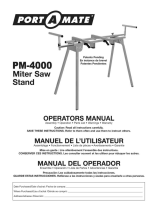 Bora Portamate PM-4000 Mode d'emploi
Bora Portamate PM-4000 Mode d'emploi
-
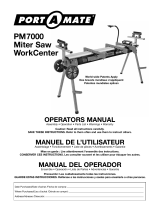 Bora Portamate Saw PM7000 Manuel utilisateur
Bora Portamate Saw PM7000 Manuel utilisateur
-
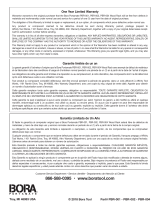 PORTAMATE 6-Level Lumber Storage Rack Manuel utilisateur
PORTAMATE 6-Level Lumber Storage Rack Manuel utilisateur
-
bora PM-1100 Mode d'emploi
Autres documents
-
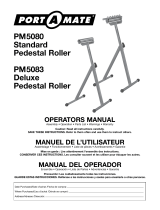 PORTAMATE PM-5083T Mode d'emploi
PORTAMATE PM-5083T Mode d'emploi
-
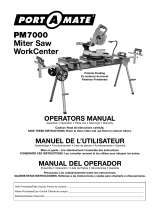 PORTAMATE Saw PM7000 Manuel utilisateur
PORTAMATE Saw PM7000 Manuel utilisateur
-
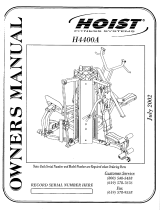 HoistFitness H-4400 Le manuel du propriétaire
HoistFitness H-4400 Le manuel du propriétaire
-
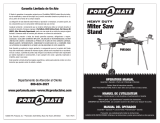 PORTAMATE PM-5000 Mode d'emploi
PORTAMATE PM-5000 Mode d'emploi
-
RIDGID R4021SN Manuel utilisateur
-
RIDGID R4031S Manuel utilisateur
-
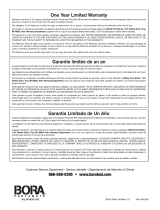 Bora Portamate PM-2550 Le manuel du propriétaire
Bora Portamate PM-2550 Le manuel du propriétaire
-
Ryobi RTS22 Mode d'emploi
-
Affinity Tools HTC2000 Manuel utilisateur
-
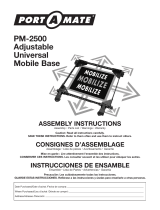 Affinity Tools PM-2500 Manuel utilisateur
Affinity Tools PM-2500 Manuel utilisateur




































